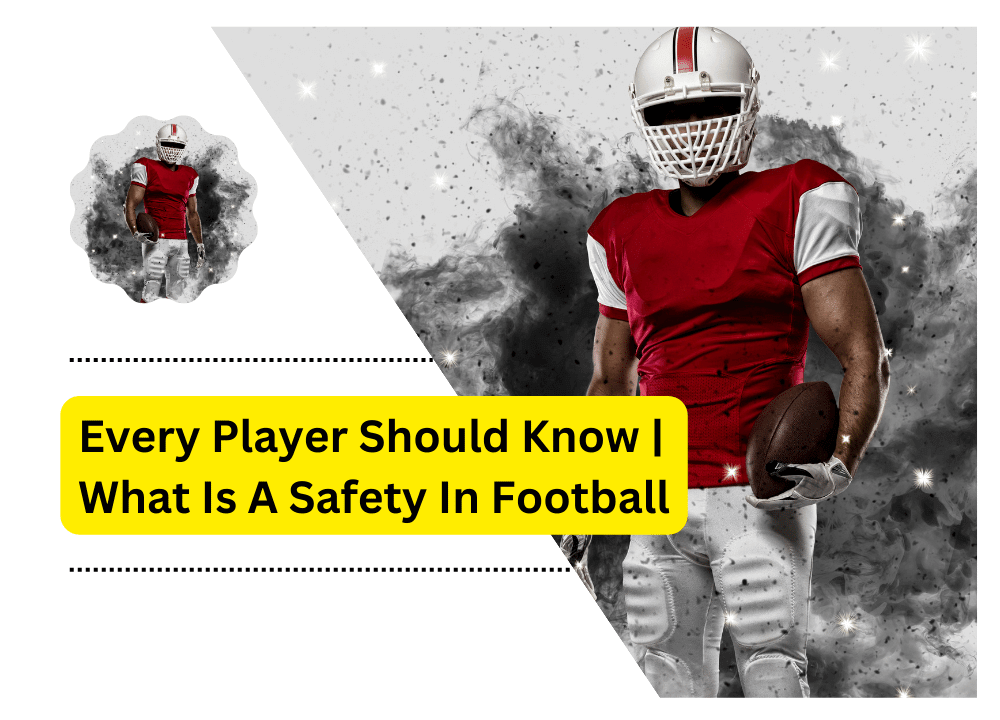Football is thrilling and exciting, but playing it correctly requires knowing the rules and proper safety protocols. Knowing what qualifies as safety is one of the most essential pieces of information for any player or coach to understand.
What is Safety in Football?
In football, safety occurs when the offense commits a foul in their end zone, fumbles the ball out of their end zone, or is tackled. As a result, the defense scores two points and the kicking team starts their next drive with the ball. Safeties can also be called on punts, field goal attempts, and free kicks when the kick does not reach its target yardage.
When safety is called, the play immediately stops, and the ball is given to the defensive team at their twenty-yard line or quarter of the field, depending on where the ball went out of bounds. It’s essential for coaches to recognize what constitutes safety and regularly review these rules with players so that everyone knows how to defend against potential safety before it happens appropriately.
Responsibilities of a Safety
Strong safety responsibilities in football are a significant position on the field. The primary responsibility of safety is to prevent the opposing team from scoring. They do this by intercepting passes, tackling runners, and ensuring no one gets behind them. Safeties must also be good at reading the quarterback’s eyes to anticipate where the ball is going.
Strategies to Play the Position Effectively
Safety is a crucial football position responsible for the last line of defense. The safety must be prepared to stop the play when the ball is thrown or handed off to a running back.
There are two types of strong safety positions: free and robust. Free safeties typically have more responsibility in pass coverage, while strong securities are generally better against the run.
The following are some critical strategies for playing the safety position effectively:
- Read the quarterback’s eyes and anticipate where the ball is going. This will allow you to be in a position to make a play on the ball.
- Be sure to wrap up when tackling. This will prevent the ball carrier from breaking free and gaining extra yards.
- Stay disciplined in your assignments. This means not biting on play-action fakes or falling for other deception by the offense.
Benefits of Having a Great Safety on the Team
Safety is crucial in football, and their responsibilities are essential for the team’s success. Securities must be able to make quick decisions and always be aware of their surroundings. They must also be able to communicate effectively with their teammates.
The benefits of having excellent safety on the team are numerous. A security who is always alert and aware of what is going on around them can help prevent big plays from happening. They can also make tackles in open space, saving the team yards. Excellent communication skills are essential for safety, as they must relay information to their teammates quickly and accurately.
Having excellent safety on the team can make a big difference in the defense’s success. Securities are vital in stopping the opposing offense and keeping the ball out of their hands. They are often called the “last line of defense,” and their performance can mean the difference between winning and losing.
How to Prepare for Playing Safety
Safety in football is a significant position on the field. Safety is responsible for many things in the area, including stopping the run, covering receivers, and making tackles.
There are a few things that you can do to prepare for playing safely. First, you need to be in excellent physical shape. This means that you need to be able to run fast and hit hard. It would help if you also had good stamina to play for an entire game.
It would help if you were mentally prepared for playing safety. This means knowing your responsibilities on the field and being able to make quick decisions. You need to be able to think quickly and react quickly to what is happening on the field.
It would be best if you had good technique. This means knowing how to tackle correctly and how to cover receivers adequately. If you have a good strategy, you can effectively execute your responsibilities on the field.
Training and Skills of a Safety Football Player
To be a successful youth football player, athletes must possess more than just the physical attributes necessary for success. Quality safety needs the right mindset and approach to training to become a valuable asset for the team.
Therefore, youth players must develop skills and techniques that help them excel on the field. These include proper tackling techniques, studying game film, and building speed to help them cover ground quickly in pursuit of the ball.
Throwing Speed
In particular, athletes should focus on increasing their throwing speed when playing safety. Throwing speed is a critical skill for security that allows athletes to make dynamic plays and break up long pass attempts. To increase throwing speed safely, youth athletes should strengthen their arms and shoulders, practice proper form when throwing the ball, and implement drills to improve overall rate.
By prioritizing arm strength and throwing speed, youth athletes can become more proficient at playing safety. This will help them stay safe while making dynamic plays that enable secure victories for their team. Youth athletes can become standout players on the field with rigorous training and dedication to improving their skills.
In addition to throwing speed, youth athletes should also focus on developing footwork and agility. Agility drills benefit safeties as they help them stay light on their feet while pursuing the ball. Furthermore, having solid footwork allows athletes to move quickly and efficiently across the field while making plays.
Youth athletes who focus on increasing their throwing speed, developing footwork and agility, and studying game film can become valuable assets for their teams. With these skill sets fortified, safeties can make dynamic plays that help the team secure victories.
FAQs
Q: What is the most essential aspect of safety in football?
This includes things like wearing protective gear, staying hydrated, and being aware of potential hazards on the field. By doing these things, you can help make sure everyone involved in the sport can participate safely and enjoyably.
Q: What happens if someone is injured while playing football?
Q: What does safety do in football?
Q: Why is it called safety in football?
Conclusion
Football is an exciting sport that requires commitment and skill from its players. But What is Safety in Football, and why is it always a top priority for everyone involved to enjoy the game? With the proper measures, football can be a thrilling and safe experience for all concerned.
From good warm-up routines to wearing protective gear, safety should always remain at the forefront of the game. By following these protocols, everyone can enjoy football in a safe and enjoyable environment.





